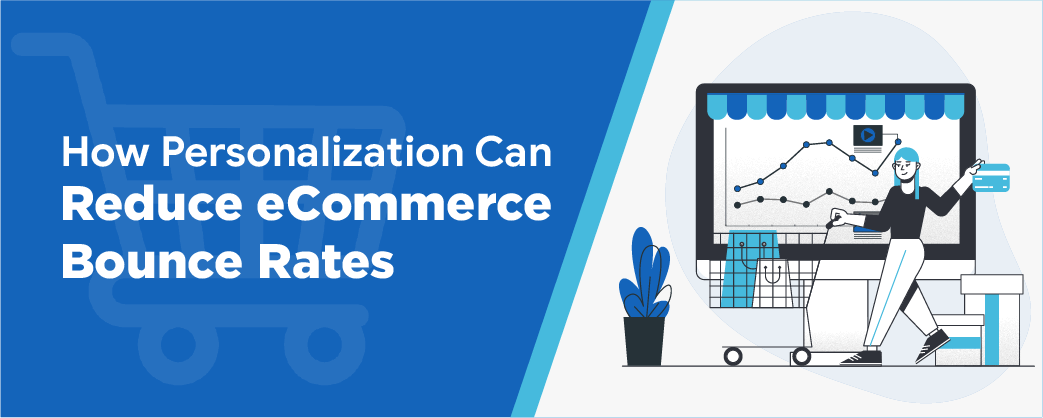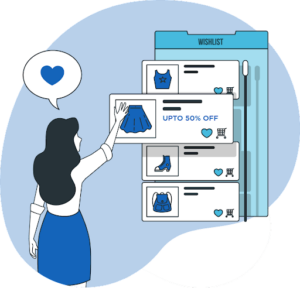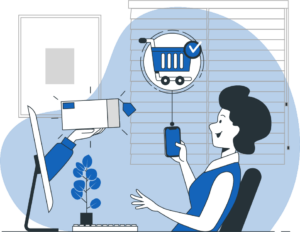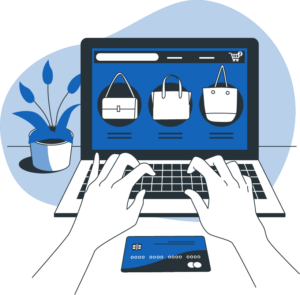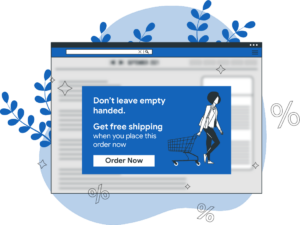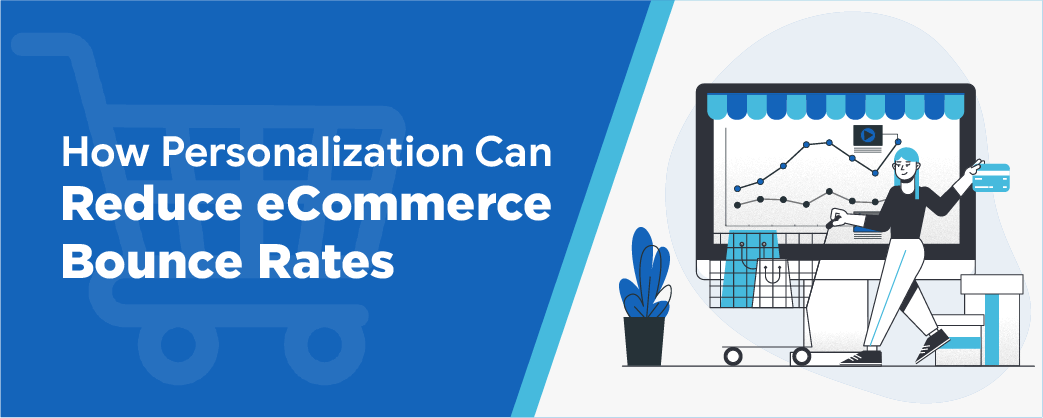
What is a Bounce Rate on an eCommerce Website?
Bounce rate is the percentage of visitors who left the website after visiting only a single page or without making a purchase or adding any items to the cart. A visitor lands on the website and then immediately clicks the exit button. They take about 0.05 seconds to decide whether they like the eCommerce site enough to stay or bounce away. Some scenarios that count as a bounce could be loading error, improper design, lack of user-friendliness, and no matching products.
Reasons Behind Increase in Website’s Bounce Rate
There could be many reasons for an increase in bounce rate. Some are:
- Poor design of the eCommerce website
- Lack of user-friendly functionality
- Confusing UI/UX
- Too many pop-ups and advertisements
- Not founding relevant products
- Poor reviews
- No proper call to action
- Confusing navigation between pages
- Low-quality contents
- Broken links
- Slow loading page
- No relevant products
- Misleading headlines, etc.
So, what to do to reduce the bounce rate and increase the conversion of the eCommerce website? The answer is – eCommerce personalization!
What is eCommerce personalization?
The term eCommerce personalization means showing individualized product recommendations, offers, and other content to visitors based on their previous actions, analyzing personal data like demographics, buying behavior, and browsing history.
With this, you can attract more customers and even attract existing users by giving them personalized services. Offering tailored-fit messages and personal assistance to users makes them satisfied and happy.
Benefits of eCommerce personalization to reduce the bounce rate of the website
Advantages and examples of personalized services offer to the eCommerce sites:
- Better conversions
- Increased sales
- Improved loyalty
Now, here are some examples that can help in preventing visitors from bouncing away:
1. Personalize homepage
The homepage is the first landing page that users come across. Whenever anyone searches the website over the internet, they first encounter the homepage. Grab visitor’s attention in very little time. Show them relevant messages and direct them to the products that might stir their interests. Also, you can personalize a homepage by dynamically changing its elements, content, and appearance to match the type of visitors like – new visitors or returning visitors.
For new visitors, who are not familiar with the site, the navigation should be clear and concise. You can also show your popular trending items or products on the homepage to familiarize them with what you have to offer so that they do not feel confused and lost when surfing your website. Make new visitors feel welcome and get them to familiarize themselves quickly and easily with your site. And For that, welcoming messages, short descriptions, trending products, and the best CTA’s helps a lot!
2. Offering product categories based on browsing history
User’s browsing history is an essential technique for eCommerce personalization that you can offer to visitors. The visitor/customer feels nice if you, as a brand, have remembered their purchases and interests. It makes them want to visit your website frequently.
Offering a browsing history or most viewed products and items on the homepage could enhance their searching process. Users will easily find the products they are looking for, and it saves their time.
3. Make custom and personalize search results pages.
To reduce bounce rate with personalization is to make search results more specific and user-friendly with Smart AI tools that can examine the interests and desires of the users based on their past purchase history and recommend the relevant products and items to them. You can offer the Image search and Smart search functionality on top of the homepage to enable users to search for their favorite products and items. If the user clicks on the search bar and types ‘S’. Then, all products starting with ‘S’ must be displayed in the below results like shirts, shoes, etc.
4. Experiment with dynamic content and messaging
Messaging plays a crucial role in any online store ads or eCommerce site. The type of content, designing elements, colors, and buttons reflect your offerings like – products & services to your visitor. Every user coming to your site has different motivations and needs for visiting, so your contents and messaging must adapt to your visitor’s intention, interests, and likings. If you want to offer a coupon code to the visitors, you can make it even more relevant by ensuring that it relates to the category your visitors are browsing. You can show category-specific offers, and offer them a signup discount or new user discount. Personalized offers and discounts attract new users to purchase and even entice the existing ones to remain in your store.
5. Improve product page and segregate users
Product pages are designed as a sales pitch model to tell your visitors more about your product, its features, and its benefits. So, personalizing your product page is the most important part of eCommerce personalization. The customers are most likely to buy based on personalized recommendations, so you can get more sales by recommending products while users are at checkout.
Showing what other people bought alongside the product they’re currently viewing can also help you optimize the product page. If the user had purchased a shirt, then we can show them similar shirts for upselling. Hence, promoting cross-selling and reducing bounce rate.
As we know that each online website has different users, some are new, and some are existing, where others may know and be familiar with the site but might not have purchased from the site. In this scenario, it is best to segregate your users based on their past purchases interest, geolocation, etc. By segregation, you could frame different marketing emails for different users. It means only those who are relevant to a particular mail campaign will receive that specific mail.
Providing personalized service to the users will even increase the chances of purchases. The customers will get products or services they are interested in, which will drive the users to buy those products.
6. Show personalized offers as exit-intent pop-ups and triggers for returning users.
Display the exit-intent offers to any visitor who is about to click the exit button returning to the home page. Exit-intent popups can enable your visitors to stay back at your site or even to make a purchase! These pop-ups help to grab the attention of the visit or through a personalized offer or some exciting products.
The exit-intent technology can help you automatically trigger an exit-intent offer that will pop up right before a customer is about to leave the site. Leverage the exit-intent pop-ups to get the email address or contact details of the users to target them through email campaigns.
Remember that exit-intent pop-ups will only be the last chance to hold your users. The content and the design of the pop-ups should be neat and useful for the users.
Including a chatbot in the site as an option is the most crucial and helpful aspect for any website. The purpose of a live chat is to help visitors with their queries and questions with no need for email or call. Apart from that, live chatbot options would be best to serve the clients during regular working hours.
Providing support and personalized assistance to the visitors could help in the long run of the eCommerce market and, you can build trust in your services that will eventually boost your sales and prospects.
Conclusion
Be sure that you have to build a relationship and loyalty with your customers. If a visitor doesn’t trust you, then they won’t buy from you. To increase sales and reduce your website’s bounce rate, build a relationship with your visitors. Do not give false information or offers on the site that misleads the users.
If visitors get constantly personalized services, then they will not go anywhere else.
There are various reasons why visitors bounce. The key to reducing the eCommerce bounce rate is by understanding your visitor’s intentions of visiting and checking the quality of your site.
Using exit-intent popups, optimize your product page, segregate your users, using correct CTA’s can make the purchase experience smooth and easy.
So, these are some ways in which personalization helps to reduce bounce rate.

